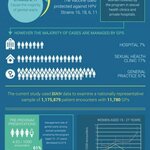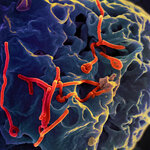Immunology

To fight leukemia, we have to fight on its terms, and that means understanding the nature of the fight for superiority between mutated genes and normal genes, according to a paper that investigated Acute Myeloid Leukemia to understand why leukemic cells are not able to develop normally into mature blood cells.
Stem cells in the bone marrow generate billions of different blood cells each day. The process resembles a production line with genes acting as regulators to control each step of the blood formation. Leukemia arises when the DNA encoding regulators in the stem cells is changed by a…

Scientists have devised a new antibiotic based on vancomycin that is effective against vancomycin-resistant strains of methicillin-resistant Staphylococcus aureus (MRSA) and other disease-causing bacteria. The new vancomycin analog appears to have not one but two distinct mechanisms of anti-microbial action, against which bacteria probably cannot evolve resistance quickly.
Vancomycin entered clinical use in 1958, five years after its isolation from microbes in a soil sample gathered by an American missionary in Borneo. For nearly six decades it has been useful against a wide range of…

The current Ebola virus outbreak in West Africa has claimed more than 2000 lives and has spurred calls for a deeper understanding of the molecular biology of the virus that could be critical in the development of vaccines or antiviral drugs to treat or prevent Ebola hemorrhagic fever.
A team at the University of Virginia, under the leadership of Dr. Dan Engel, a virologist, and Dr. Zygmunt Derewenda, a structural biologist, has obtained the crystal structure of a key protein involved in Ebola virus replication, the C-terminal domain of the Zaire Ebola virus nucleoprotein (NP).
The team…

By Marsha Lewis, Inside Science
(Inside Science TV) – One of the deadliest forces on earth is the humble mosquito. Mosquito-borne diseases like malaria, chikungunya, yellow fever and West Nile virus infect more than 350 million people and kill another 1 million people every year.
Now, scientists in Florida hope to wipe out some of these deadly diseases by genetically modifying their winged carriers.
“Mosquitoes are probably the most dangerous animal in the world. More people are killed by them [than] by anything else," said Michael Doyle, an entomologist at the Florida Keys Mosquito Control…

The saying goes that we shouldn't let the perfect be the enemy of the good, so while there is no cure for muscular dystrophy, rather than solely focusing on the underlying genetic defect might not help people right now as directly targeting muscle repair.
Muscular dystrophies are a group of muscle diseases characterized by skeletal muscle wasting and weakness. Mutations in certain proteins, most commonly the protein dystrophin, cause muscular dystrophy in humans and also in mice.
A University of Michigan team led by cell biologist Haoxing Xu discovered that mice missing a critical…

When it comes to defense against viruses, the immune system has an arsenal of weapons at its disposal, including killer cells, antibodies and messenger molecules, and when a pathogen attacks the body, the immune system usually activates the appropriate mechanisms.
But some mechanisms are always on stand-by. Researchers from ETH Zurich and the University of Bern, have now discovered a new soldier in that innate immune defense. They have shown that it acts against particular viruses with a genome in the form of single-stranded, positive-sense RNA. Many known pathogens, such as hepatitis…

Doctors in Australia are reporting 61 percent fewer cases of genital warts among young women since the introduction of the national human papillomavirus (HPV) vaccination program.
The study reviewed more than a million patient encounters between 2000 and 2012 and found a significant year-on-year reduction in the management rate of genital warts in women aged 15-27 years since the vaccination program started.
The HPV vaccination program was introduced in 2007, and the rate of genital wart presentation fell dramatically from 4.33 per 1,000 encounters pre-program (2002-2006) to 1.67 per 1,…

Dengue is a serious illness diminished in importance in much of the developed world. Some efforts evolve around genetic modification while other efforts work on a vaccine.
It's not to cause alarm, but experts caution that a vaccine will probably cause temporary but significant spikes in the disease in the years after it first used. This counter-intuitive and unwanted result could lead to frustrated policy makers, a skeptical public and concerns that the vaccine is making things worse instead of better. Instead, it is just the natural result of complex interactions between less-than-…

Scanning electron micrograph of Ebola virus budding from the surface of a Vero cell (African green monkey kidney epithelial cell line. Credit:NIAID
By Rob Brooks
My social media accounts today are cluttered with stories about “mutating” Ebola viruses. The usually excellent ScienceAlert, for example, rather breathlessly informs us “The Ebola virus is mutating faster in humans than in animal hosts.”
But what does that even mean? Should we be terrified of mutant viruses?
The story is based on a paper just published online at the journal Science under the title Genomic surveillance elucidates…

The MERS coronavirus has caused disease outbreaks across the Arabian Peninsula and spread to Europe several times, claiming the lives of several hundred people since its discovery in 2012.
How easily the pathogen spreads from human to human has remained a mystery but recent work shows human transmission is low. Still, a third of infected persons with symptoms die.
The "Middle East Respiratory Syndrome Coronavirus" (MERS-CoV) was detected for the first time in 2012 on the Arabian Peninsula from where it spread to Europe and the USA, among other places. The virus causes severe acute lung…